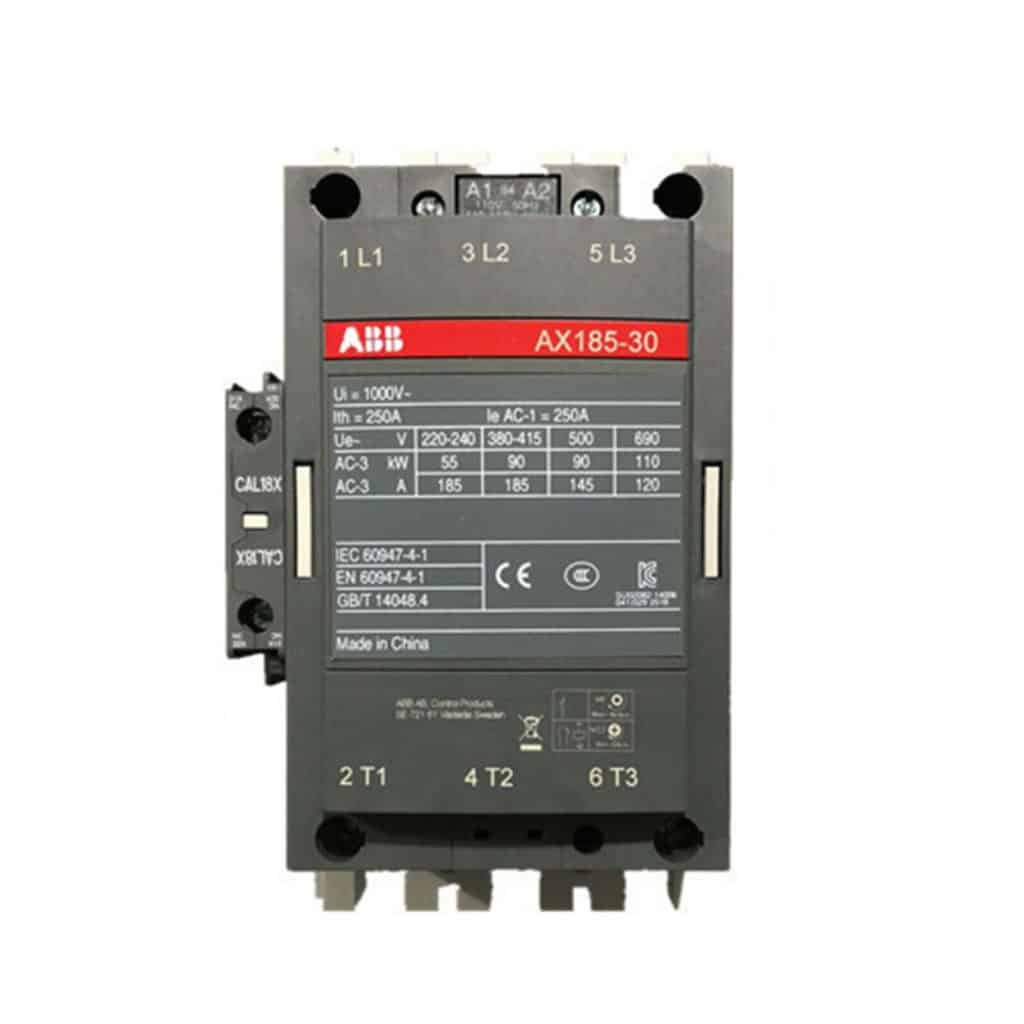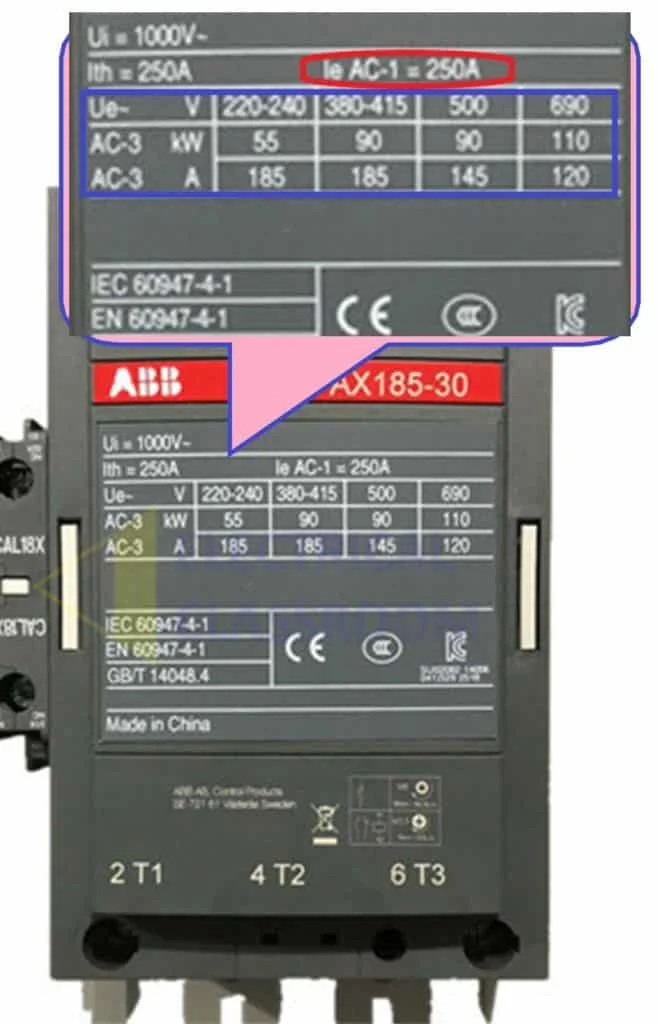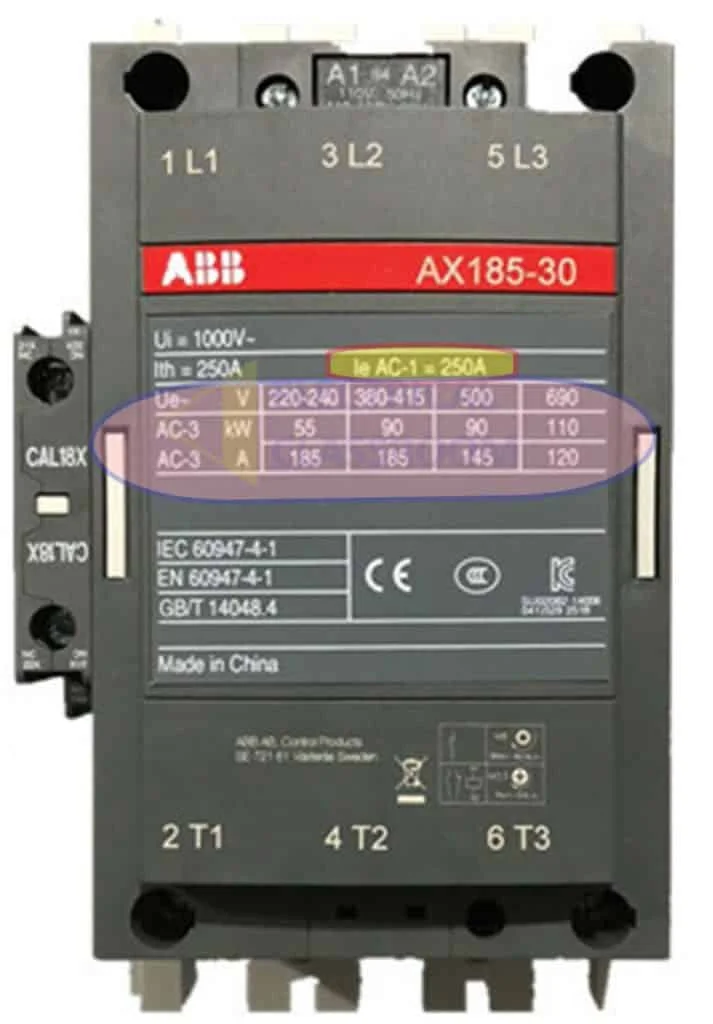The utilization categories AC-1 and AC-3 defines making, breaking and continuous operation current rating for contactors. Based on these rating, contactor for switching of resistive loads and switching of squirrel cage induction motor are selected.

The above picture shows a contactor manufactured by ABB with its operational current rating labelled on it. It can be noticed that operational current ratings are different for utilization categories AC-1 and AC-3, also for different voltages.
Utilization categories AC-1 and AC-3
AC-1 duty contactors
All AC loads having power factor higher than 0.95 are listed under AC-1 utilization category. Example: resistive load, heating, distribution. These loads have much lower starting current or inrush current. The arc formed while opening the contacts are minimal and can be easily extinguished.

AC-1 continuous operational current rating is the maximum current that the contactor can switch when any load under AC-1 utilization category is connected. In the case of contactor shown in picture, it is 250A(encircled in red).
AC-3 duty contactors
Starting of squirrel cage motor and switching of the motor during normal operation is listed under AC-3 utilization category. Squirrel cage motor drains 6 to 8 timed its rated current during start. Switching off the motor during running can result in arc formation between the contacts.
AC-3 duty contactors are designed to withstand the starting current and extinguish the arc formed during switch off. The contacts in these contactors are capable of withstanding the heat generated due to arc formation.

In the above picture, you can see the AC-3 duty current carrying capabilities of the contactor at different operational voltages.
Does the AC-3 rating indicate the normal operating load or the inductive inrush current?